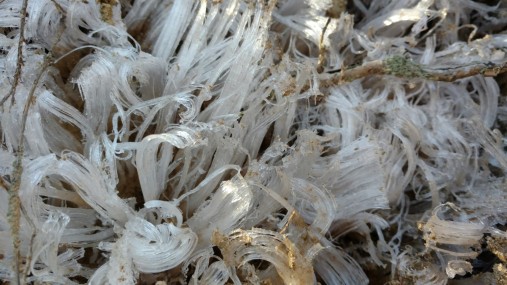When my family moved to North Carolina, in the summer of 1998, I was fourteen with an endless imagination for the adventures these hazy blue mountains would hold for an erstwhile Georgia flatlander. I moved away after a short while (to Dayton, Tenn., for college in 2002, and I’ve lived in Chattanooga since 2006), but these hills have always felt like home. Fortunately, my parents still live in the same county, so I get to come back and stay often.
Of all the mountains, perhaps none captured my fancy quite like Snake Mountain. It was due north from the back deck of the house we first lived in up there, its silent, volcano-like visage staring at me every morning. Unlike many other peaks around the area, it was also inaccessible—private property with no marked trail or easy access to its 5,555′ rock-strewn summit.

Some years ago, the property owner allowed for a hiking easement, but I’ve not found the time to check it out. Most hikes with family opt for more easily obtained objectives. This Christmas break, though, my sister, my brother-in-law, and I decided to give it a go. As a bonus, we even talked my dear wife and our oldest two girls into tagging along. Were we ever in for some fun.
The trailhead, such as it is, is a metal farm gate on the southbound side of Meat Camp Road, across from a gravel pull-off just big enough for three or four cars. It’s about 1/2 mile past the entrance to Elk Knob State Park (which is a worthwhile hike in its own right). There are several gates on the same side of the road, so look for the one with the “Practice Leave-No-Trace Hiking” sign on a telephone pole next to it. A quick hop of the gate (if it’s closed) and you’re off.
The first mile or so is a wide (if quite steep) unpaved road—whether for logging or access to utilities. The steady ascent moves between woods and fields, and opens up some fine views of nearby peaks.
After nearly 700 feet of elevation gain, the trail splits off the road and becomes excruciatingly vertical, navigating a narrow way through grass, rocks, and mud. Passing some impressive cliffs, the sweeping view to the north and east begins to take shape—taking in much of Ashe County and on up to Mount Rogers and Whitetop in Virginia.
The ascent slows at a sub peak, with a semi-level stretch along a narrowing rock-ledged ridge. At this point, off to the right, you might notice a road and parking lot, which is part of a failed housing development accessed through Tennessee (at this point, the ridgeline—and trail—follows the state line). I think you can access the trail from there, making a shorter approach. The easygoing stops abruptly when the trail appears to dead-end into a small cliff. We made the mistake of following some trodden ground to the right, but the trail actually goes straight up in a tough scramble (because it is private property without an “official” or maintained trail, the whole route is unblazed).

Because of the error, we ended up sidehill in thick woods as the false trail petered out. Rather than going back, we made a tree-to-tree sprint back to the top of the ridge to re-find the trail and made it to the north sub-summit for lunch. The view west and south (encompassing the Holston Valley, Grandfather Mountain, the Roan Mountain massif, and the Black Mountains) opens up. On this well warmer than average day, the wind was low, and ravens were circling the cliffs (likely eying my kids’ cheetos).
After a knee-busting descent down a stair-step of amphibolite outcroppings, a look back shows the difficulty of what you’ve accomplished.
The rest of the descent back to the road portion is a nice mix of deft, ACL-preserving maneuvers through leaves and mud and step-downs with some good, old-fashioned butt-busting slides. Once you hit the walkable section it’s a quick hustle back to the car. The whole descent from the summit barely took 30 minutes (covering nearly 2 miles). An afternoon well spent, with views as good as I’ve seen anywhere. My oldest daughter said the rock climbing work was harder than what we did at Joshua Tree this summer, which did my Carolina heart proud.



































